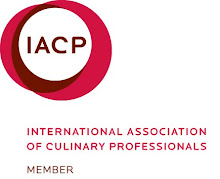
If I hadn't been thinking about the Royal Wedding, and reading all about the Royal Wedding cake and then thinking about Queen Elizabeth in general this particular millefoglie cake wouldn't have pushed itself up to the forefront of my thoughts and inspired me to get in my car this morning to head to the Cavalletti Pasticceria. I've only had this millefoglie three or four times, but each time it's been more than a heavenly experience.
Before I tried it, if asked I suppose I would have said that millefoglie is not actually one of my favorite desserts. This millefoglie IS my favorite dessert. And judging by the quantity of millefoglie in the glass front fridges, along with the number people at Cavalletti to purchase them it seems these millefoglie are many people's favorite dessert.
Returning to Queen Elizabeth. Apparently she is also quite taken with the Cavalletti millefoglie and, if one is to believe an article which appeared in La Repubblica a few years back, the Queen occasionally has Cavalletti's millefoglie shipped back to her in England.
The Cavalletti website also affirms that La Stampa, La Repubblica, Class ( Vogue), the Gambero Rosso, Il Veronelli, Roma Conviene and the Guida Rover all have rated Cavalletti one of the top five pastry shops in all of Italy.
Cavalletti is a family owned and run business, operating in the same location for the past sixty years. Its location on Via Nemorense is a small, unpretentious storefront and had I not been searching it out I might not have stepped through the door. Friends of ours who used to live in the neighborhood introduced us to Cavalletti's millefoglie and I think they came upon it purely by chance. This part of Via Nemorense is a mixed residential and business neighborhood, overcrowded with cars double and triple parked.
The millefoglie I purchased today was the smallest one available: about seven inches wide and close to seven inches high. You need a razor sharp knife to cut it, simply because it's so delicate that applying pressure to the cake with a dull knive will squish out all its delectable fresh cream and zabaione filling.

When I got to Cavalletti today with the full intention of photographing the object of my desire, I was met by some resistance on the part of one of the owners. I don't know exactly what her concern was, if she thought that somehow the family recipe would somehow be etched into my photographs, or perhaps simply some kind of protective instinct: like a mother protecting her creation. In any case, I was in the end allowed to take a few photographs once the owner was softened by my unabashed admiration for her family millefoglie.
I'd hoped to open the fridge for a quick photograph of the shelves of millefoglie, but alas that wasn't to be.

Cavalletti doesn't only make small millefoglie like the one I took home. Millefoglie of all shapes and sizes are being created throughout the day to satisfy the multitude of orders Cavalletti receives. Simply based on the the comings and goings of this Saturday morning, coupled with the dozens of millefoglie I saw on display, I imagine they make a few hundred daily.
This millefoglie was large enough to serve about fifty people...

In addition to millefoglie, Cavelletti also makes delicious gianduia chocolates, wrapped in metallic blue paper with the company name etched in gold. I couldn't resist buying a small bag of them, which I just finished by the way.

Cavalletti is a full fledged pasticceria so in addition to its signature product and its gianduia chocolates you can also buy a tantalizing assortment of other chocolates, small pastries, cakes and enticing fresh cream-filled chocolate cakes decorated with shaved dark chocolate.


















































